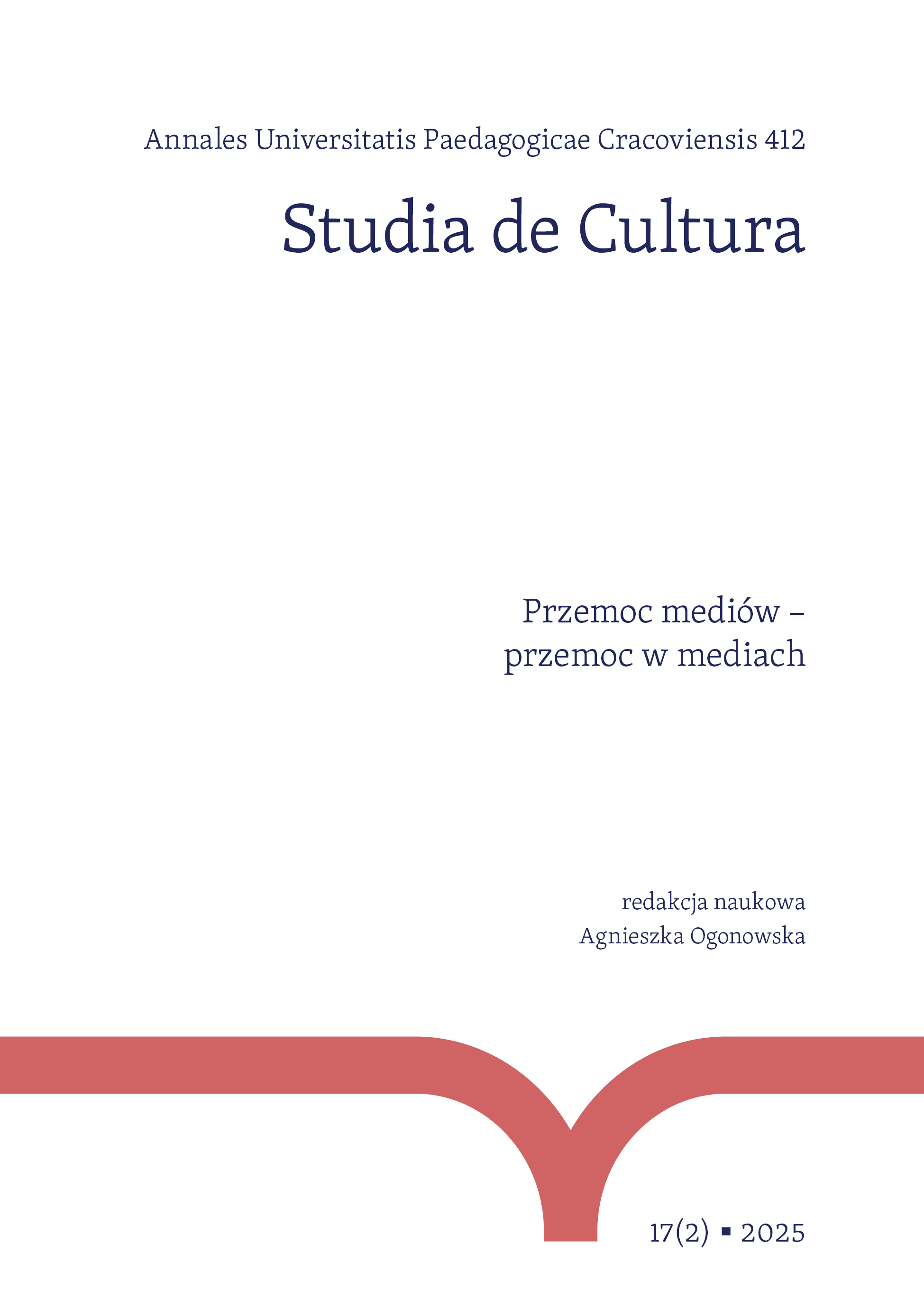Abstract
This article explores the late work of English director Tony Scott. Drawing on the theories of French urbanist Paul Virilio, the author analyzes how these films portray social classes and their relationship to speed. Scott’s films reflect the realities of the turn of the century – marked by increasing speed, the extensive use of “vision machines,” and the rise of digital surveillance technologies. These themes occupy a central place in Scott’s projects – both narratively and visually – defining his hyperactive, kinetic style.
References
Armitage John. 2000. From Modernism to Hypermodernism and Beyond: An Interview with Paul Virilio. W: Paul Virilio From Modernism to Hypermodemism and Beyond. John Armitage (red.). London. 25–56.
View in Google Scholar
Arnett Robert. 2015. „Understanding Tony Scott: Authorship and Post‑Classical Hollywood”. Film Criticism vol. 39(3). 48–67.
View in Google Scholar
Baudrillard Jean. 1988. America. London.
View in Google Scholar
Bauman Zygmunt. 2007. Płynna nowoczesność. Kraków.
View in Google Scholar
Bordwell David. 2010. The Way Hollywood Tells It: Story and Style in Modern Movies. Oakland.
View in Google Scholar
Conley Verena Andermatt. (1999). The Passenger: Paul Virilio and Feminism. W: Paul Virilio From Modernism to Hypermodemism and Beyond. John Armitage (red.). London. 201–214.
View in Google Scholar
Doherty Thomas. 2002. Teenagers and Teenpics. Philadelphia.
View in Google Scholar
Fleming Charles. 1998. High Concept: Don Simpson and the Hollywood Culture of Excess. London.
View in Google Scholar
Innis Harold. 2008. The Bias of Communication. Toronto–Buffalo–London.
View in Google Scholar
Langford Barry. 2010. Post‑Classical Hollywood: Film Industry, Style, and Ideology since 1945. Edinburgh.
View in Google Scholar
Loska Krzysztof. 2000. „Wojna i prędkość. W stronę estetyki katastrofy Paula Virilio”.
View in Google Scholar
Principia. Pisma koncepcyjne z filozofii i socjologii teoretycznej. Studia z filozofii filmu t. XXVI. 195–208.
View in Google Scholar
Marks Karol, Fryderyk Engels. 2007. Manifest Partii Komunistycznej. Warszawa.
View in Google Scholar
Martell William C. 2000. The Secrets of Action Screenwriting. E‑book.
View in Google Scholar
Virilio Paul. 1991. The Aesthetics of Disappearance. Los Angeles.
View in Google Scholar
Virilio Paul. 2007. Wypadek Pierworodny. Krystyna Szeżyńska‑Maćkowiak (przeł.). Warszawa.
View in Google Scholar
Virilio Paul. 2008a. Open Sky. London.
View in Google Scholar
Virilio Paul. 2008b. Prędkość i Polityka. Sławomir Królak (przeł.). Warszawa.
View in Google Scholar
Wilkoszewska Krystyna. 1993. „Paula Virilio filozofia prędkości i estetyka znikania”. Kultura Współczesna nr 1. 108–113.
View in Google Scholar
Wyatt Justin. 1994. High Concept: Movies and Marketing in Hollywood. Austin.
View in Google Scholar
Zeidler‑ Janiszewska Anna. 1994. Prędkość – film – media – śmierć. Od futurystycznej fantazji do estetyki zanikania. W: Prędkość i przyjemność. Kino i telewizja w dobie symulacji elektronicznej. Andrzej Gwóźdź (red.). Kielce. 49–66.
View in Google Scholar
Bevan Joseph. 2015. Man on Fire: Tony Scott. https://www.bfi.org.uk/sight‑and‑sound/features/man‑fire‑tony‑scott (dostęp: 6.12.2024).
View in Google Scholar
Brooks Rosetta, Robert Rauschenberg. 2005. Round the Block Once or Twice. Nowy Jork. https://www.rauschenbergfoundation.org/sites/default/files/2022–12/RRFA01_Interviews_2005_BrooksRosetta_RoundtheBlockOnceOrTwice_ModernPainters.pdf (dostęp: 8.12.2024).
View in Google Scholar
Clement Nick. 2020. The Billy Weber Interview: Part Two. https://wearecult.rocks/the‑billy‑weber‑interview‑part‑two (dostęp: 19.09.2024).
View in Google Scholar
Denby David. 2024. Murphy’s Law: Beverly Hills Cop II. https://www.vulture.com/article/beverly‑hills‑cop‑ii‑review‑david‑denby-1987.html (dostęp: 19.09.2024).
View in Google Scholar
Ebert Roger. 1987. Beverly Hills Cop II. https://www.rogerebert.com/reviews/beverly‑hills‑cop‑ii-1987 (dostęp: 19.09.2024).
View in Google Scholar
Ebert Roger. 2015. Manic Energy Melds Crime, Showbiz. https://www.rogerebert.com/reviews/domino-2005 (dostęp: 29.11.2024).
View in Google Scholar
Macdonald Dwight. 1963. „Our Invisabile Poor”. The New Yorker. https://www.newyorker.com/magazine/1963/01/19/our‑invisible‑poor (dostęp: 2.12.2024).
View in Google Scholar
Człowiek w ogniu. 2004. Tony Scott (reż.).
View in Google Scholar
Deja Vu. 2006. Tony Scott (reż.).
View in Google Scholar
Domino. 2005. Tony Scott (reż.).
View in Google Scholar
Gliniarz z Beverly Hills II. 1987. Tony Scott (reż.).
View in Google Scholar
Metro Strachu. 2009. Tony Scott (reż.).
View in Google Scholar
Niepowstrzymany. 2010. Tony Scott (reż.).
View in Google Scholar
Zawód: Szpieg. 2001. Tony Scott (reż.).
View in Google Scholar

This work is licensed under a Creative Commons Attribution-NonCommercial 4.0 International License.
Copyright (c) 2025 Annales Universitatis Paedagogicae Cracoviensis. Studia de Cultura

